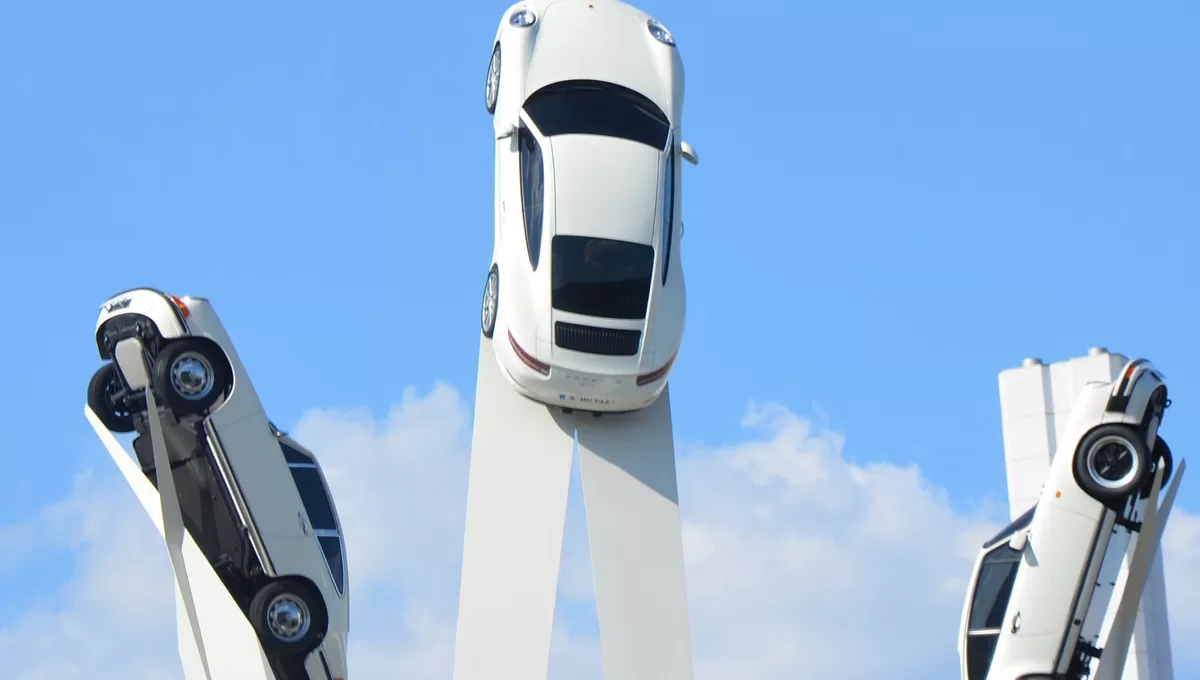Flying car in future – Introduction
The idea of a flying car has been around for decades. The concept remains more in the realm of science fiction than reality. There is a significant amount of progress made in the region of aviation and autonomous vehicle technology that could one day cause the emergence of a practical and safe flying car. In this note, I’ll talk about recent and conceivable advances in this area.
Flying car in future- Challenges
One of the biggest challenges in developing a flying car is safety. Flying cars would need to meet the same rigorous safety standards as airplanes, as they would be operating in the same airspace as commercial airliners and other aircraft. In addition to standard airplane safety features, flying cars would need some additional features, such as parachutes or airbags, to ensure the safety of occupants in the event of a crash. They should be equipped with advanced navigation and control systems to avoid mid-air collisions and safely operate in three dimensions.
Another challenge is the evolution of a practical propulsion system that can provide enough power to lift the vehicle off the ground and maintain flight. One possible solution is to use hybrid or electric engines, which are more efficient and environmentally friendly than traditional gasoline engines. There are also ongoing efforts to develop new lightweight materials and advanced manufacturing techniques that could help reduce the weight of flying cars and make them more fuel-efficient.
Regulatory and legal hurdles are also significant challenges. Governments should develop a new framework for regulating flying cars, including licensing requirements, airspace management, and safety regulations. Additionally, there are issues related to liability and insurance, as accidents involving flying cars could have significant consequences.
Flying car in future- Developments
Despite these challenges, there have been some promising developments in flying cars. Several companies, including Terrafugia, AeroMobil, and PAL-V, have developed flying car prototypes in various stages of development. These vehicles got designed to operate on land and in the air, and some are already undergoing flight testing.
Another potential use for flying cars is in urban air mobility (UAM), which refers to using small electric aircraft to transport passengers and goods in urban areas. Major companies such as Uber, Airbus, and Boeing have announced plans to develop flying taxi services that could operate in urban areas. These services could help alleviate traffic congestion and provide faster and more efficient transportation options for people who live in cities.
Importance of flying cars in future
The development of a flying car could have significant implications for the future of transportation. Here are a few ways that flying cars could be necessary:
- Reducing traffic congestion: Traffic congestion is a problem in many urban areas, and flying cars could potentially help alleviate this issue. By allowing people to travel over traffic, flying cars could significantly reduce the time it takes to get from one place to another and reduce the number of vehicles on the road.
- Improving transportation accessibility: Flying cars could help make transportation more accessible to people who live in areas with limited infrastructure, such as rural or remote areas. Also, they could facilitate travel to locations that are challenging to get to by land or water.
- Emergency response: Flying vehicles could be a beneficial tool for emergency response, enabling first responders to reach locations that are challenging to get to by road too rapidly.
- Economic benefits: The evolution of a new industry around flying cars could create jobs and stimulate economic growth. It could also lead to new industries and technologies having broader societal repercussions.
- Environmental benefits: Flying cars may be more environmentally beneficial than conventional vehicles, especially if they run on electric or hybrid power. They could also help reduce emissions by reducing the number of automobiles on the road.
Flying car in future- Verdict
It’s important to note that the evolution of a practical and safe flying car will likely be a long and complex process, and many technical, regulatory, and safety challenges need repairing. Additionally, there could be potential negative consequences, such as increased noise pollution and the potential for mid-air collisions. Nonetheless, the development of flying cars could have significant implications for the future of transportation and society together. In conclusion, many technical, regulatory, and safety challenges need repairing. The evolution of a practical and safe flying car is not outside the realm of possibility. As technology moves on, we may see flying vehicles and other types of aerial vehicles becoming a mode of transportation
READ MORE :
- All About Aston Martin Cars
- Audi e tron Review
- Bently Continental GT price in India
- BMW X1 Price in India
- Brezza 2022 Launch date in India
- Why Bugatti Is So Expensive?
- Best car dealers in Dubai
- Concorde Motors Kochi
- Honda Showroom Kochi
- Indus Motors Thevara
- KIA DEALERS IN PUNE
- Lamborgini Showroom in India
- Nippon Toyota Kalamassery
- Rolls Royce Showroom in India
- Sai Service Pathadipalam
- Top 10 Car Showrooms Kottayam,
- Top 5 Car Showrooms Trivandrum
- BREZZA 2022 vs TATA NEXON
- Citroen C3 price in India
